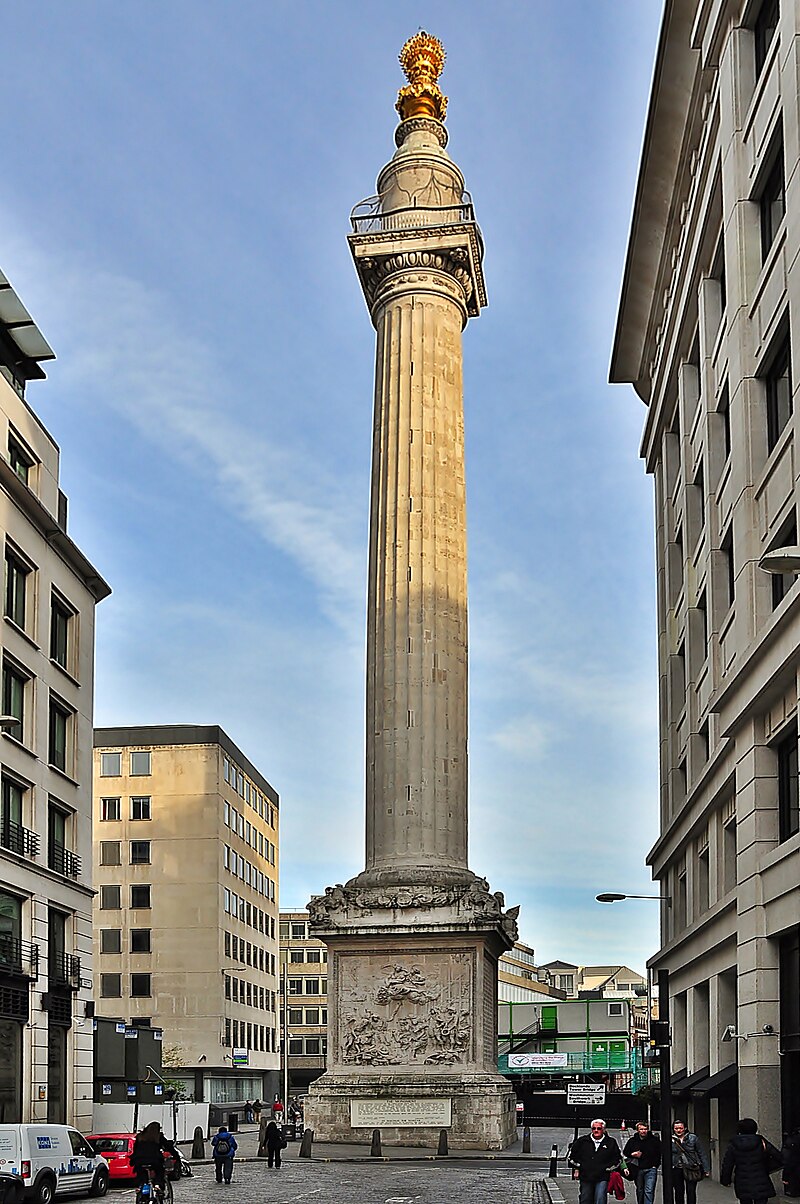The narrative of the history of London as a metropolis has three bold points: the Great Fire of 1666, the Great war (World War I) and World War II. These were events when not only was the city rebuilt but it was also redefined. There is evidence of that grit in the architecture of this city throughout. Sir Christopher Wren was the principal architect in the rebuilding of the city after the Fire. A permanent monument that he designed stands close to where the Great Fire started and devoured the entire city in 4 short days. The Monument is a fluted Doric column built of Portland stone, topped by a gilded flaming urn. It stands at 202 feet, the exact distance between this site and Pudding Lane where the fire began. You can climb the 311 steps on the narrow winding staircase to the top but we decided to pass and move on to next line in our itinerary.
Walking over from the Monument, we made our way to the Tower. The famed Tower of London is an imposing castle built by William the Conqueror around the end of 1066 on the banks of the majestic Thames. Most people recognize this landmark as the infamous prison where Anne Boleyn, Sir Thomas Moore and Oliver Cromwell were held captive and later executed. We took an hour long guided tour led by Andy, one of the 38 Yeoman Warders who lives in the Tower. He was loud, brash, funny and very informative. He helped us get oriented to the layout as well as to the history of the Tower. After getting a lot of information which included the definition of what exactly it meant to be “hanged, drawn and quartered" or what your days would entail if you were imprisoned in the Tower, we were left to explore the rest of the complex on our own. The White Tower, an imposing medieval palace built in the 11th century is still used as an Archive and storage for the Royal Armory. It has permanent exhibitions featuring arms and ammunitions used by the monarchs over the years. I found this to be an ingenious use of historic buildings, not common in other parts of Europe. Instead of locking up buildings as historic in the interest of conservation, the old buildings in London are retro-fitted and used, thereby ensuring their regular upkeep and maintenance.
The piece de resistance of the day was of course the Crown Jewels, housed in the Jewel house. The exhibition features the jewels and ceremonial pieces like sword, scepter and orb used by different English monarchs. The one we wanted to see was at the end of the tour. The Kohinoor diamond, that sits atop the Crown used by the current monarch EIIR - Elizabeth II Regina (the official Latin name for Queen Elizabeth II). Even as school children, all Indians are told that among all the treasures looted by the British during the Raj, the Kohinoor diamond was the most precious. Seeing it in real-life, however in a bombproof glass case, studded in a velvet purple crown, along with other precious stones, it feels underwhelming.This is a piece of rock, shinier than others lying next to it in the bowels of the Earth, found and given a high value by men. Sure, this has come from the Kakatiya dynasty in Hyderabad by way of Babur and countless other hands, but what exactly gives it any value? Wars were fought over these and other shiny baubles? What a waste!
Our day of discovery of the system of the English Monarchy ended at the Tower Bridge or the London Bridge. It was day spent in reflection and deep appreciation for the respect that modern-day Britons have for their monarch and tradition which allows the monarchy to exist in this modern Republic.






